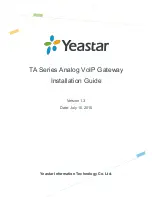
AWS Storage Gateway User Guide
Editing Storage Settings for Your File Share
Note
You cannot undo the force delete operation.
3. In the message that appears in the
Details
tab, verify the ID of the file share that you want to
forcibly delete, select the confirmation box, and choose
Force delete now
.
API operation to forcibly delete the file share.
Editing Storage Settings for Your File Share
You can edit the default storage class for your Amazon S3 bucket, the squash level setting, and the
Export as
option for your file share. Possible
Export as
options include, for example,
Read-write
.
To edit the file share settings
1. Open the AWS Storage Gateway console at
https://console.amazonaws.cn/storagegateway/home
.
2. Choose
File shares
, and then choose the file share that you want to update.
3. For
Actions
, choose
Edit storage settings
.
4. Do one or more of the following:
• For
Storage class for new objects
, choose a default storage class for your S3 bucket, and choose
Save
.
Possible values for the storage class for new objects are the following:
•
S3 Standard
– Store your frequently accessed object data redundantly in multiple Availability
Zones that are geographically separated.
•
S3 Standard_IA
– Store your infrequently accessed object data redundantly in multiple
Availability Zones that are geographically separated.
•
S3 One Zone_IA
– Store your infrequently accessed object data a single Availability Zone.
For more information, see
in the
Amazon Simple Storage Service Developer
Guide
.
• For
Object metadata
, choose the metadata that you want to use:
• Choose
Guess MIME type
to enable guessing of the MIME type for uploaded objects based on
file extensions.
• Choose
Give bucket owner full control
to give full control to the owner of the S3 bucket that
maps to the file's Network File System (NFS) or Server Message Block (SMB) file share. For more
information on using your file share to access objects in a bucket owned by another account, see
Using a File Share for Cross-Account Access (p. 146)
.
• Choose
Enable requester pays
if you are using this file share on a bucket that requires the
requester or reader instead of bucket owner to pay for access charges. For more information,
• For
Squash level
, choose the squash level setting that you want for your NFS file share, and then
choose
Save
.
Note
You can choose a squash level setting for NFS file shares only. SMB file shares don't use
squash settings.
Possible values are the following:
•
Root squash (default)
– Access for the remote superuser (root) is mapped to UID (65534) and
GID (65534).
•
No root squash
– The remote superuser (root) receives access as root.
•
All squash –
All user access is mapped to UID (65534) and GID (65534).
API Version 2013-06-30
148
















































